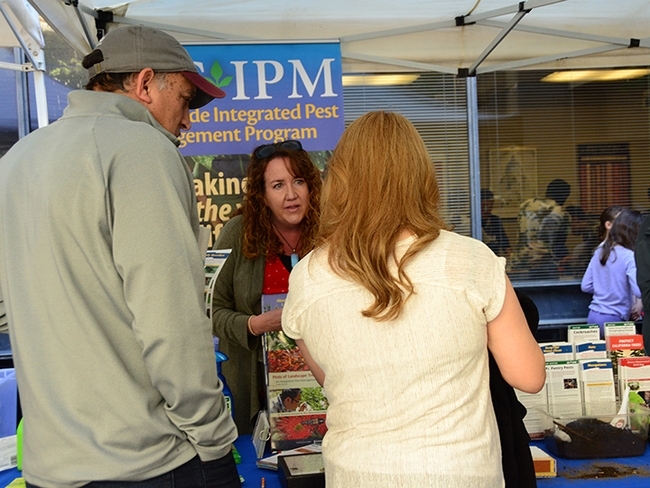
Little kids love selecting lady beetles, aka ladybugs, at the UC Statewide Integrated Pest Management (UC IPM) booth at Briggs Hall during the annual campuswide UC Davis Picnic Day.
The excitement, the capture, the I-get-to-take-these-home-and-put-them-in-my-garden look.
Who doesn't love a lady beetle? (Besides the gentlemen beetles, of course!)
Karey Windbiel-Rojas, associate director for Urban and Community IPM and area Urban IPM advisor, and her colleagues are ready for the crowds that will descend on entomological displays at the all-day Picnic Day on Saturday, April 15, the 109th annual.
The Briggs Hall activities, organized by the UC Davis Department of Entomology and Nematology, include cockroach races, maggot art, forensic entomology, and more. (See Bug Squad blog for events and activities at both Briggs Hall and the Bohart Museum of Entomology)
The UC IPM specialists will provide information information sheets on both endemic and invasive pests and will answer questions.
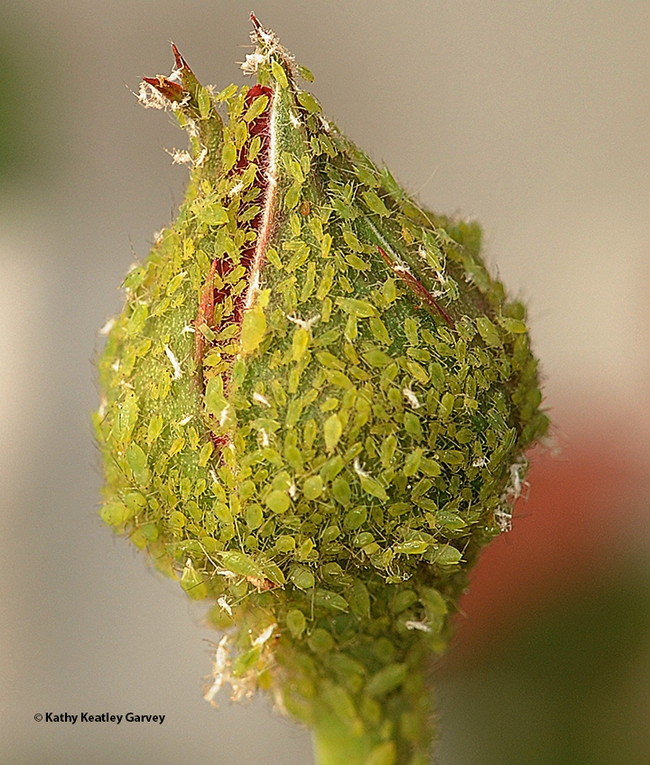
Note that it's not a bug; it's a beetle. Entomologists call them "lady beetles" because this insect is not a true bug. It belong to the family Coccinellidae. Scientists have described about 5000 species worldwide, and about 450 in North America.
"Lady beetles, or ladybugs, are round- or half-dome-shaped insects with hard wing covers," UC IPM writes on its website. "About 200 species occur in California and most are predators both as adults and larvae. Some species specialize on aphids or other groups; others have a broader diet."
Lady beetles, the good guys and gals in the garden, are natural enemies of aphids and other soft-bodied insects. Scientists say a lady beetle may eat around 50 a day, and as many as 5000 aphids in its lifetime. Sadly, the larvae, which look like mini-alligators, are often mistaken for pests.
Don't kill 'em! Treasure 'em!
Attached Images:
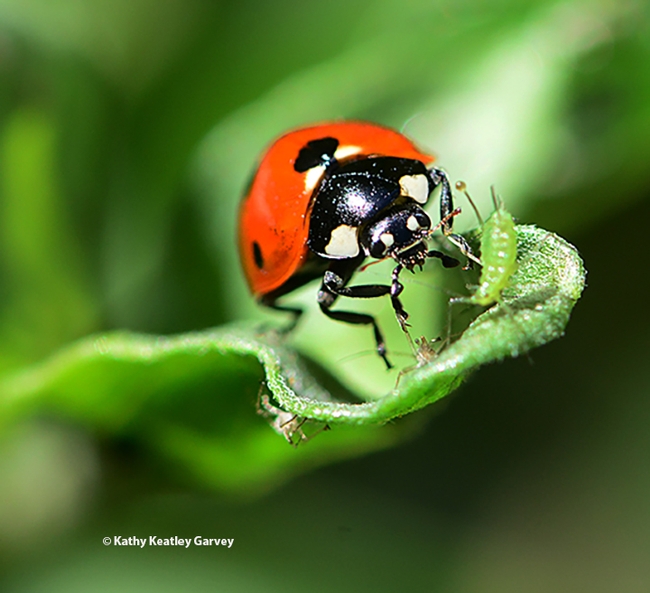
A lady beetle, aka ladybug, gets ready to devour an aphid. (Photo by Kathy Keatley Garvey)
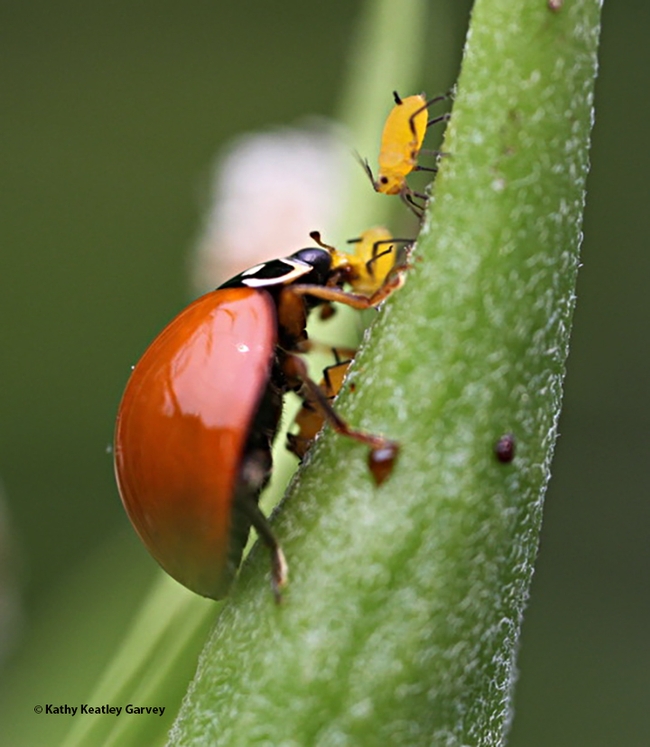
Get in line! A lady beetle devouring oleander aphids. (Photo by Kathy Keatley Garvey)
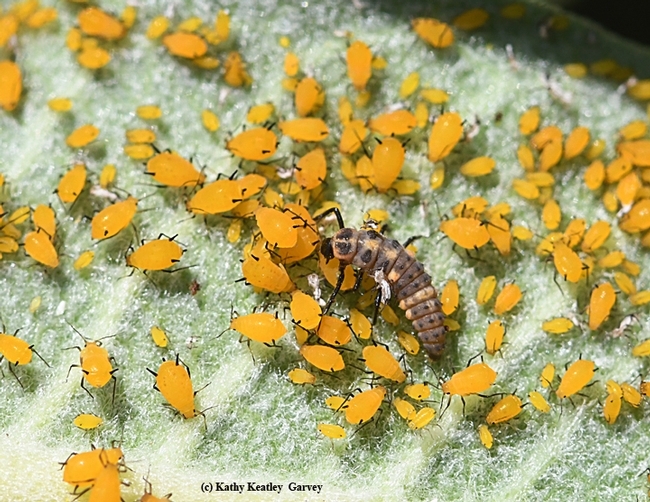
The larvae of lady beetle devour aphids, too. (Photo by Kathy Keatley Garvey)
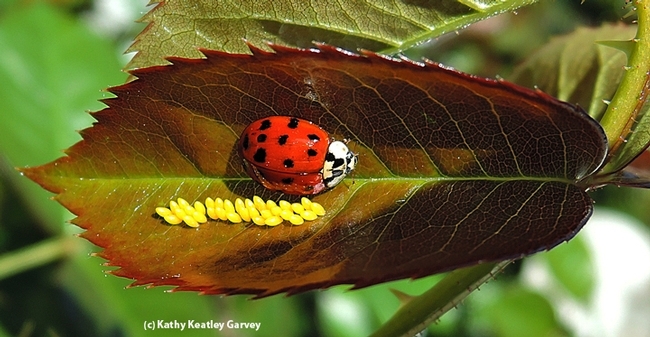
A lady beetle and her eggs. (Photo by Kathy Keatley Garvey)